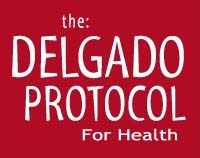(Video) Platelet Rich Therapy and Stem Cell Therapy: Revolutionary Treatments That Can Transform Your Life
If you have never heard of Platelet Rich Plasma (PRP) therapy, or Stem Cell therapy, you are not alone. Both of these therapies represent a revolution in healthcare, with the ability to heal in a capacity that has never been seen before, yet they are rarely discussed or utilized. Read on to discover the benefits and uses of these two revolutionary therapies. What you will learn may just transform your life or the life of someone you one.
PRP Explained
PRP is an extremely effective non-surgical regenerative therapy, that causes minimal pain, and effectively hastens the healing process. PRP therapy is carried out by a doctor who withdraws blood from a vein and places it in a special device called a centrifuge. The device spins the blood around and separates and extracts the platelets from the blood. The end result is blood that contains 5 to 10 times more platelets. The platelet-concentrated blood is immediately injected back into the patient. This is beneficial because platelets contain hundreds of proteins called growth factors, which are essential for the healing of injuries. To explain this further, anytime your body gets an injury (cut, wound, tear etc.) there’s a process by which it heals. Your body creates a bruise, the platelets create a clot, and the platelets release growth factors that send a signal to your body to bring stem cells to the injury site, in order to repair it. In a way, PRP is sort of like feeding extra water and fertilizer to a shriveling plant – it helps to markedly hasten the local repair response.
PRP Uses
PRP is most beneficial for accelerating the healing process in conditions that would eventually heal on their own, such as tendonitis, sprains, runners knee, and most athletic injuries. In fact, many famous athletes including Tiger Woods and tennis star Rafael Nadal have use PRP to help them get back in the game quicker post-injury.
PRP Versus Cortisone Injections
Cortisone injections are often used to reduce the recovery time of knee, hip, shoulder and other bodily injuries. The problem with cortisone injections is two-fold. Firstly, they contribute to joint deterioration overtime. Secondly, they reduce inflammation and inflammation acts as a necessary signal for your body to send healing platelets and stem cells to the site for repair. PRP, on the other hand, actually causes inflammation for a few days, which may be slightly uncomfortable for the patient, however, the added stem cells markedly hasten recovery time. Once injected PRP will last for 6 full weeks, and during that time it will continuously work to heal the injured area.
Stem Cell Therapy Explained
Stem cells have the ability to reproduce and transform and they can both repair and replace bodily tissues. Stem cell therapy involves withdrawing stem cells from bone marrow or fat (which is usually taken from around the hips). The cells are then manipulated in a lab to specialize into a specific type of cell, such as a blood cells, heart muscle cells or nerve cells and then injected back into the body where they promote a reparative response. Despite it’s effectiveness, medications, physical therapy and surgery still remain the go-to methods of treatment for many of the degenerative conditions that stem cell therapy can help to treat.
Stem Cells from Fat Versus Stem Cells from Bone Marrow
 If you are considering stem cell therapy, you should be aware that withdrawing stem cells from fat is far superior to withdrawing from bone marrow. The problem with withdrawing stem cells from bone marrow is that as you get older, you lose stem cells, and you may have very few left in the withdrawal site. Stem cells are far more concentrated in the fat and they don’t diminish with age. Also, it only takes two hours to spin stem cells from fat down and it can be injected back into the body that same day, whereas stem cell therapy using bone marrow can take up to two weeks. Finally, stem cell therapy derived from fat cells produces a longer healing time, often lasting 6 months or longer.
If you are considering stem cell therapy, you should be aware that withdrawing stem cells from fat is far superior to withdrawing from bone marrow. The problem with withdrawing stem cells from bone marrow is that as you get older, you lose stem cells, and you may have very few left in the withdrawal site. Stem cells are far more concentrated in the fat and they don’t diminish with age. Also, it only takes two hours to spin stem cells from fat down and it can be injected back into the body that same day, whereas stem cell therapy using bone marrow can take up to two weeks. Finally, stem cell therapy derived from fat cells produces a longer healing time, often lasting 6 months or longer.
PRP Versus Stem Cell Therapy
PRP helps recruit a few extra stem cells to the area of injection but it works more as an adjunct to your bodies natural healing mechanism and it only helps treat injuries. Stem cell injection therapy is much more advanced, the lab prep is more complex, the results are longer lasting, and it can be used to treat a greater variety of bodily disorders. Using the plant analogy again, PRP is like fertilizer, whereas stem cell therapy is like placing brand new seeds in the area and hiring a professional gardener to tend to it.
Stem Cell Therapy Uses
The most well-known form of stem cell therapy is a bone marrow transplant for cancer patience, but the uses for stem cell therapy don’t stop there. Stem cell therapy is extremely beneficial for degenerative diseases with notable tissue loss, such as chronic arthritis, a partial ligament or tendon tear, or torn fibers in the disk of the lower back. Stem cell therapy is so powerful; it has been known to help produce dramatic improvements in people with brain injuries from almost a decade ago. It may also help patience with joint problems, kidney problems, inflammatory bowel disease (IBS), diabetes and heart disease; as well as people who might need heart transplants, people with COPD with lung disease, and people who experience shortness of breath from aging and deteriorating lungs. Preliminary research suggests it may also be helpful in the treatment of neurodegenerative disorders such as Alzheimer’s and Parkinson’s disease; and it has been found to improve Amyotrophic Lateral Sclerosis (ALS) and Multiple Sclerosis (MS) symptoms, with relief lasting up to 12 months. Lot’s of these conditions, are considered ‘untreatable,’ yet stem cell therapy appears to be dramatically helpful a vast majority of the time.
References:
http://orthoinfo.aaos.org/topic.cfm?topic=A00648
http://stemcellstm.alphamedpress.org/site/misc/PressRelease026.xhtml
http://www.mayoclinic.org/tests-procedures/stem-cell-transplant/in-depth/stem-cells/art-20048117?pg=2[/fusion_text][/fullwidth]



